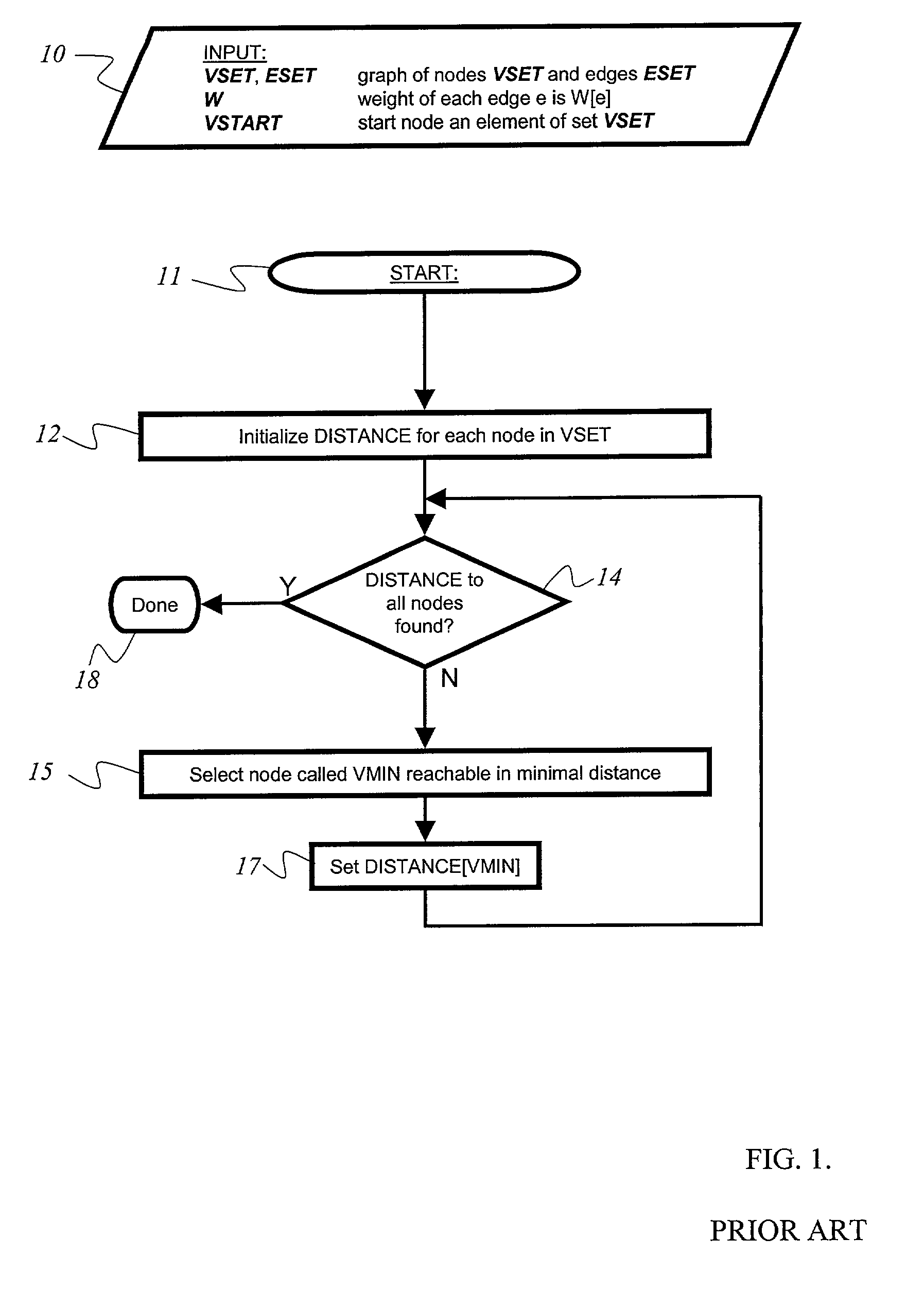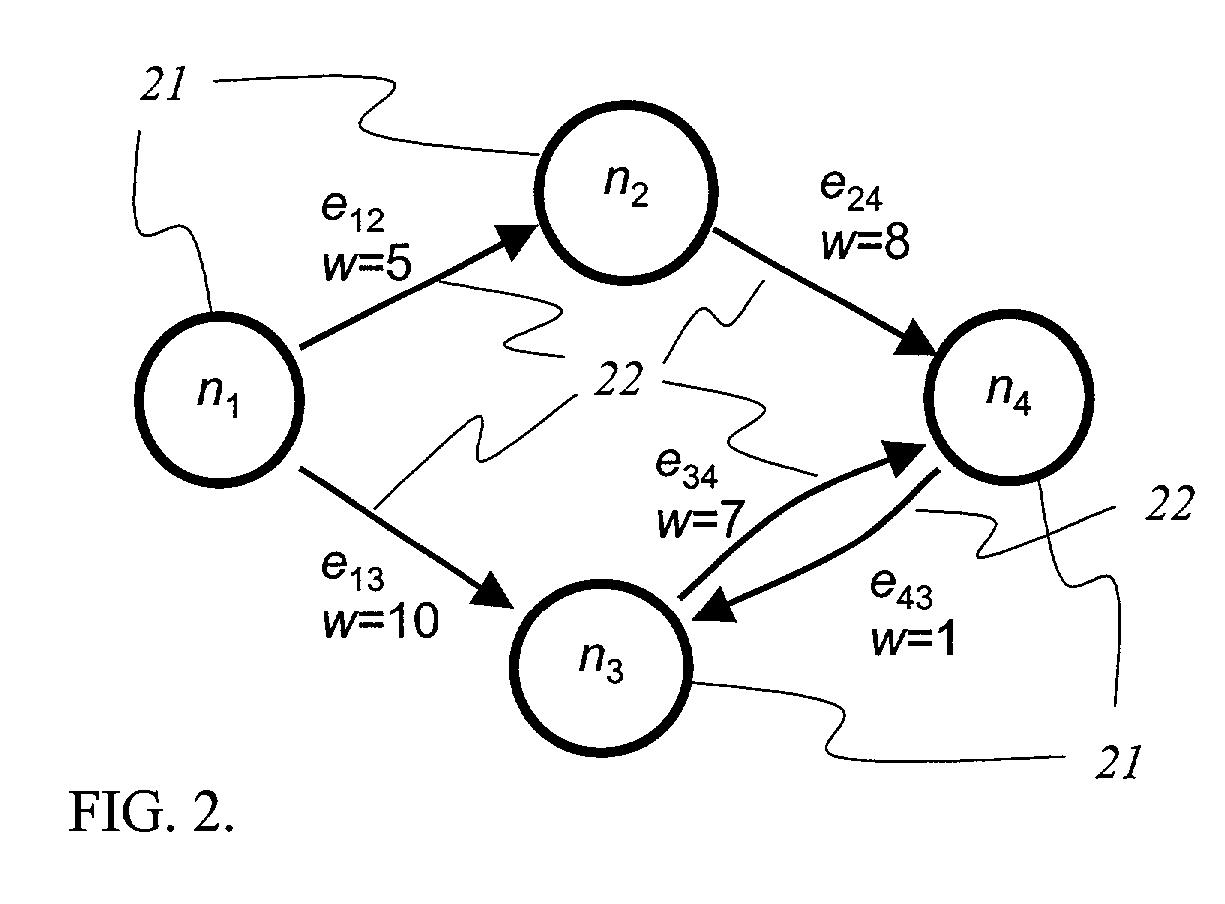Method and system for fast computation of routes under multiple network states with communication continuation
- Summary
- Abstract
- Description
- Claims
- Application Information
AI Technical Summary
Benefits of technology
Problems solved by technology
Method used
Image
Examples
Embodiment Construction
[0025]A routing system and computation method according to an embodiment of the present invention avoids convergence delays and intermittent congestion by generating and implementing optimal routes for rerouting data as needed. Route computation is optimized in that it only considers link states that actually impact the resulting optimal routes, or shortes path trees. Many link types or network status indicators and state information exchange could be used, including error return packet (e.g. ICMP or Internet Control Message Protocol message), explicit or separate network monitoring, internal server knowledge of TCP rate adaptation, lengthy delays in receipt of acknowledgements, periodic or asynchronous exchange messages and use of time-stamps for link-state information, for example.
[0026]Typically, routing includes: (1) the use of metrics or reachability (ability to reach a certain node) of various types; (2) exchange of metrics or reachability among the nodes; (3) an algorithm or ...
PUM
 Login to View More
Login to View More Abstract
Description
Claims
Application Information
 Login to View More
Login to View More - R&D
- Intellectual Property
- Life Sciences
- Materials
- Tech Scout
- Unparalleled Data Quality
- Higher Quality Content
- 60% Fewer Hallucinations
Browse by: Latest US Patents, China's latest patents, Technical Efficacy Thesaurus, Application Domain, Technology Topic, Popular Technical Reports.
© 2025 PatSnap. All rights reserved.Legal|Privacy policy|Modern Slavery Act Transparency Statement|Sitemap|About US| Contact US: help@patsnap.com



